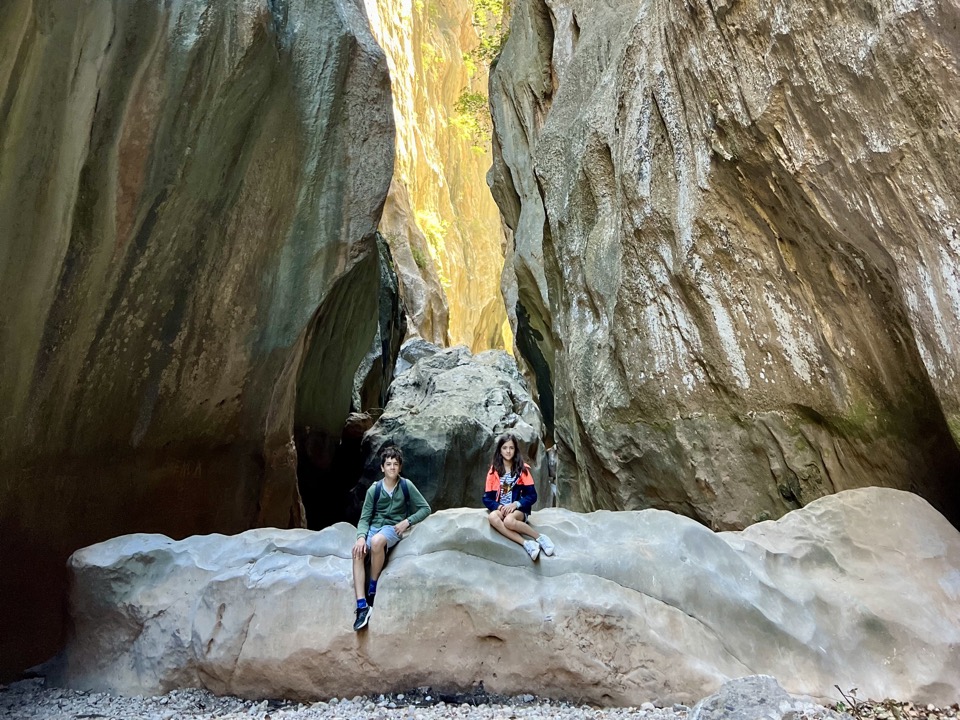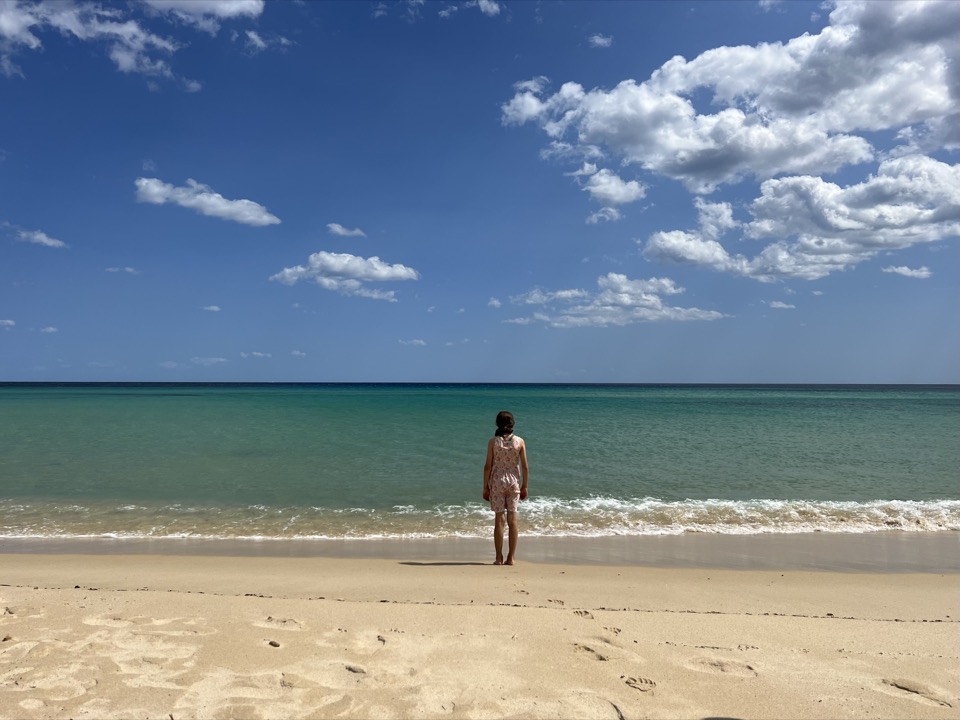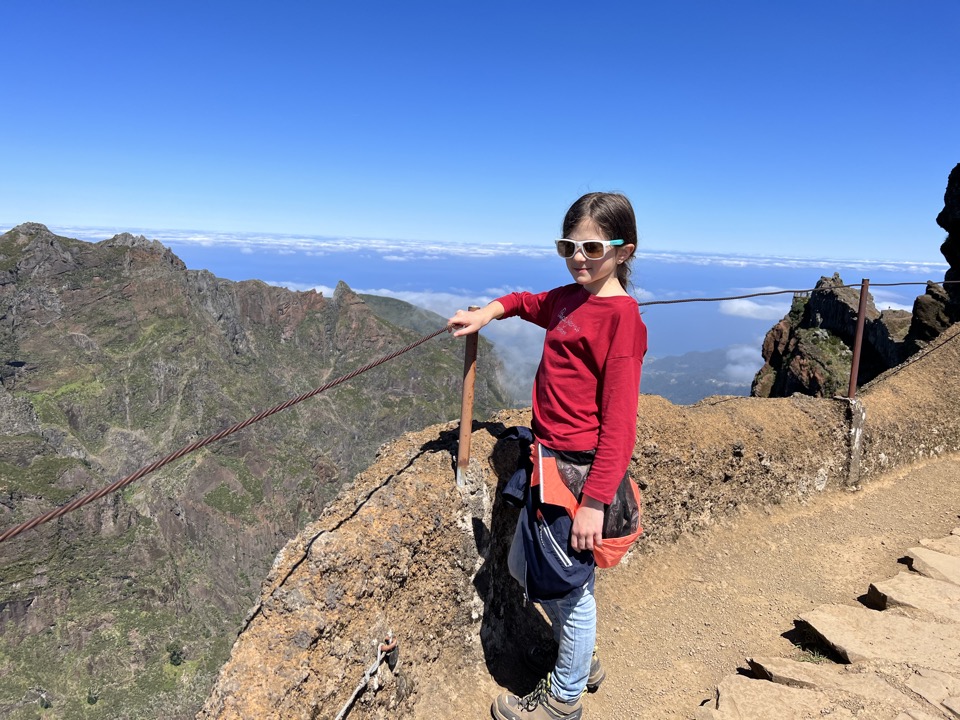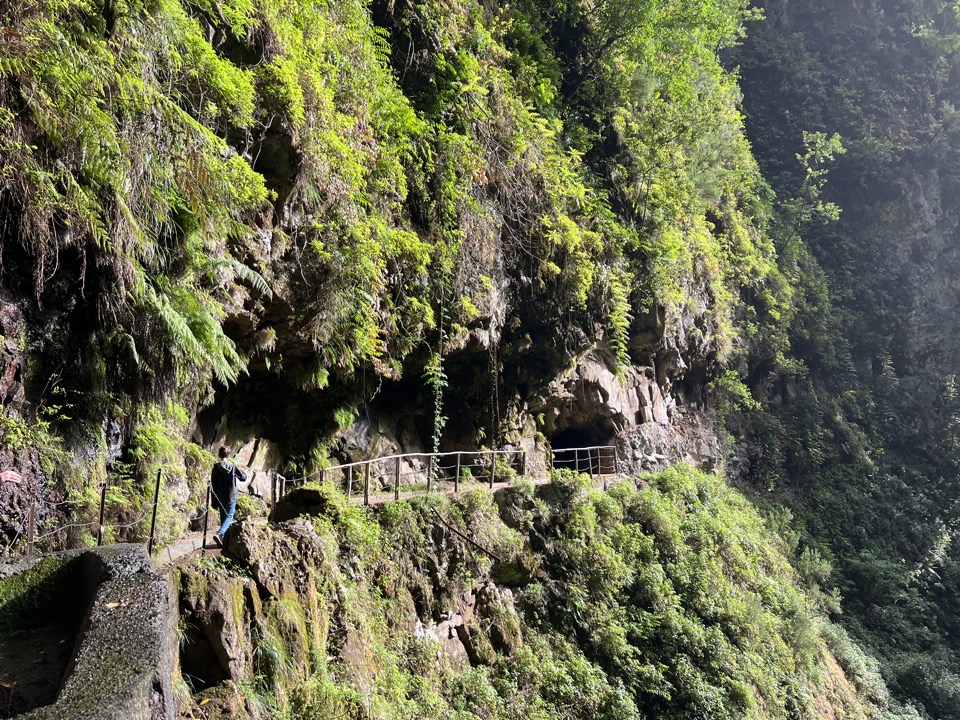Choose Les 3 Vallées for a family stay? Les 3 Vallées is the largest ski area in the world! A whole program, a whole promise and a question: which resort to choose to enjoy the 3 Valleys with your family? In December, we spent a week skiing there with the children. Ticoeur and Titpuce have been skiing since they were little. They are now 14 and 11 years old. We thought they had the level to take advantage of the incredible 3 Valleys ski area. However, some resorts in the 3 Valleys are more suitable for families than others. I will therefore share our experience with you to help you enjoy the 3 Valleys during a ski trip with the children. And I hope to enlighten you on the resorts that we found to be more family oriented.

The 3 Vallées are made up of the Courchevel valley, the Méribel valley and the valley which is home to Les Ménuires and Val Thorens. The 4 stations that I have just mentioned are the main resorts. If we add the small resorts of Brides-les-Bains, Saint Martin de Belleville and Orelle, that makes 7 resorts in the ski area. In total, Les 3 Vallées offers 600km of slopes! It is enormous ! We skied from 8:30 a.m. to 5 p.m. with just a quick break for lunch in picnic mode. Suffice to say that we took full advantage of the ski area and the ski pass! Here is our feedback on each of the 3 valleys and the main resorts…

The Méribel valley: the advantages and disadvantages for skiing with the family
The advantages of Méribel:
- Méribel is located in the central valley of the area. That’s probably why this station is symbolized by a heart. It is in the heart of the 3 Valleys and this is its greatest asset! This therefore means that if you stay in Méribel, you will have as much ease in going skiing towards the Courchevel valley to the east as towards the Ménuires valley/Val Thorens to the west. The connections are very simple and effective.
- The pretty trees! In the Méribel valleys, we see a lot of fir trees. The landscape is therefore particularly beautiful thanks to the vegetation. The other two valleys have few fir trees in comparison and therefore offer whiter and more deserted landscapes.
- The family atmosphere: we found that there was a family atmosphere in Méribel and that it was very pleasant.
- The slopes we liked in Méribel:
- the blue slopes “Fawn”, “Biche”, “Mont Vallon”, “Combe du Vallon”, “Venturon”
- the red slopes “Marcassin” and especially “Chamoix”
- The green trail of animals. Indeed, even if it is really very easy for good skiers, it offers a beautiful slope, quite long, with animal sculptures to admire along the way.
- Note that the “Legends” chairlifts are truly incredible in terms of comfort and efficiency.


The disadvantages of Méribel:
- The only downside concerns certain slopes: there are slopes that we did not like on the Méribel-Mottaret side and that we could hardly avoid (for example, the green slope “Perdrix”). Also, we found more icy tracks than in the other two valleys. Perhaps just due to weather conditions we had. Finally, on the main slopes of the “Pas du Lac 2” and “Saulire express 2” lifts there were often a lot of people.
In conclusion, Méribel is a very good choice for a ski trip with children, between its family atmosphere and its central location with a pretty fir tree decor as a bonus!
***
The Ménuires valley/Val Thorens:
Val Thorens is the highest station. Les Ménuires is a resort located in the same valley but lower down. As these two stations are really very different, I will devote a section to each.
Les Ménuires: the advantages and disadvantages for skiing with the family
The advantages of Les Ménuires:
- Les Ménuires, great resort for families : we found that Les Ménuires was the most family-friendly resort in the 3 Vallées area. This is where we encountered the most children during our stay. Other people confirmed to us the family spirit of the resort. The resort’s slogan is “friendly Ménuires” and we honestly found that the station deserved its nickname! We felt very good there.
- ESF lessons: only Titpuce took ski lessons with the ESF in Les Ménuires and she found that it was her best ESF experience! The ski instructor was great! There is obviously a bit of chance in terms of instructors but I must say that the welcome at the ESF office in Les Ménuires was very warm and the director very friendly!
- The proximity of Val Thorens: as Les Ménuires and Val Thorens are in the same valley, it is very easy to go from one to the other. And the peaks of Val Thorens are an experience not to be missed in terms of high altitude landscape and snow quality (see below).
- On the slopes: big favorites in Les Ménuires!
- the “Pointe de la Masse” in the morning, with the beautiful view of the summits (black, red and blue slopes to vary the pleasures – for example, we liked “Bouquetin” and “Petit Creux”). At the top you can see how the gondola works, this allows you to take a little informative break when you arrive at the station. There was also a whole Lego model!
- the slopes of the “Becca” chairlift: we loved the red “Becca” slope and there were surprisingly few people there! We took this one quite a lot! The blue slope “Lac des Combes” was very good too.
- The blue slopes “Grand Lac” and “Pâturage”
- Antigel mountain restaurant: really very good! So yes, it’s still expensive (compared to the restaurants we were used to when we eat on the Italian side in Montgenèvre) but for now, all the restaurants are expensive in the 3 Valleys (if you have any good deals, let me know in a comment!). We mainly had a picnic at the bottom of the slopes but our experience of one lunchtime at Antigel was quite positive: very friendly service and good food. I particularly recommend the trout with Beaufort.


The disadvantages of Les Ménuires:
- Further from Courchevel: based in Les Ménuires, it will be more difficult to enjoy the Courchevel part of the 3 Vallées area. Let’s say that without the constraints of the ESF courses it is entirely doable. On the other hand, for only half a day it’s tight. Obviously, there is already plenty to do in Val Thorens and Méribel which are quickly accessible.
- What about architecture then? I had often been told that Les Ménuires was very good skiing but not beautiful at all. Well, in the end, I was pleasantly surprised because yes, there are some residences that are not very elegant but they have held up well over the years. There’s nothing really too naughty and it’s not very dense. I also think that the snow front part was well thought out and I liked the sculpture in the shape of a modern bell tower as well as the charm of the little baskets, very vintage ski lifts!

In conclusion, Les Ménuires is a big favorite for us and therefore a very good choice for a ski trip with children, between its family atmosphere and its slopes!
Val Thorens: the advantages and disadvantages for skiing with the family
Val Thorens is the highest resort in the 3 Valleys. It is located at an altitude of 2300m. Besides, we had a bit of a headache when we arrived all the way from sea level. Val Thorens is the resort where we stayed because we found an economical apartment there. But, as you will see below, I do not recommend staying in Val Thorens. Ski there yes, but not sleep there.

The advantages of Val Thorens:
- The quality of the snow thanks to the altitude: the snow at the summits really has a different texture! Velvety cotton that crunches under your skis! It’s divine!
- The panoramas from the summits: There are many peaks over 3000 meters. We found that the most dizzying view was at Cime Caron. Just the arrival of the cable car is impressive!
- Access to the Orelle slope: a pleasant surprise is this very pleasant resort with very good slopes. You have to allow time to pass over to Orelle and come back but it’s worth it!
- The possibility of starting very early: as Val Thorens is located above Les Ménuires, we started at 8:30 a.m., before the ski lifts and we descended to the bottom of Les Ménuires where we showed up for the opening of the lifts at 9 a.m. It was perfect for optimizing our long ski days!
- Our favorite slopes in Val Thorens: a lot! With a particular crush on the slopes of the Peclet funitel.
- The blue slopes “Hermine”, “Tétras” and “Tête rond”
- the red slopes “Boismint”, “Col de l’audzin”, “Lac blanc” and especially “Christine” which was often deserted and yet great (its name is a tribute to the Olympic skier Christine Goitschel).
- the slopes of the Orelle resort

The disadvantages of Val Thorens:
Not really a family resort: in Val Thorens, there were mainly young students, often very good skiers but frankly dangerously fast on the slopes. Of the entire 3 valleys area, this is where we encountered the most “crazy people”! Titpuce is not yet fast enough or alert enough to anticipate complicated situations at certain track intersections. We preferred to enjoy Val Thorens and its attractions while Titpuce was in ESF lessons in Les Ménuires. With Ticoeur, it was simpler because he has more experience. Even on the green slopes, there were a lot of young adults on snowboards: I don’t think this is ideal if you have children learning to ski on these same green slopes. Finally, in Val Thorens, the party starts very early and we didn’t like having to return to the resort (because we were staying there) in the company of skiers who had drunk too much at Folie Douce and who were no longer very attentive on the slopes back down. Without even the problem of sobriety, the return to the station at the end of the day is truly chaotic: too high a density of skiers on the slopes which lead to the station. Finally, there was too much noise and parties in the residence where we were staying (and in many other residences I think). Fortunately, our immediate neighbors were calm but we could have really been right next to all night parties! I would like to point out that we were in the 3 Valleys a week before the school holidays in France. No doubt there are more families during school holidays. However, it was clear to us that there was not the same atmosphere in Val Thorens as in the other resorts of the 3 Valleys.
In conclusion, Val Thorens offers exceptional ski conditions! If your children are very good skiers, we recommend taking advantage of the 3 Valleys pass. On the other hand, we do not recommend sleeping there during a family stay.
***
The Courchevel valley: the advantages and disadvantages for skiing with the family
The advantages of Courchevel:
- Courchevel beyond the clichés: we had already stayed in Courchevel when the children were younger and we really liked it! We only took the Courchevel package (not the 3 Valleys) and it was more than sufficient at the time. Courchevel is the 3 Valleys resort with the most slopes (108 slopes). In any case, we felt that the density of skiers was lower even when, the previous time, we were there in the middle of the February school holidays. Overall, there are fewer people on the slopes than in the other resorts in the area. There are a lot of very wide slopes with a lot of blue slopes. In short, very pleasant ski areas for children whatever their level.
- The slopes we liked in Courchevel:
- the blue slopes: “Creuse”, “Altiport”, “Pralong”
- the red slopes: “Marmots”, “Saulire”

And as always, art comes to Courchevel. Currently, we can see works by

The disadvantages of Courchevel:
- As it is the easternmost station, it is very well connected to Méribel. But going skiing in Val Thorens and Les Ménuires would take way too much time if you have to juggle your children’s ESF lessons. Moreover, there are several sites in Courchevel: Courchevel village is central and the connection around 1850 is very fast. Courchevel 1850 is perfectly located but even more unaffordable than the rest of the resort. Courchevel-Morind is really too far away in our opinion and in Courchevel La Tania, we did not have good snow because it is much lower.
- The difficulty in finding accommodation: When we stayed for a week in Courchevel, we took advantage of a good deal through my family. Since then, I have often looked at the apartments on offer in Courchevel and I have never found anything within our budget (by far!). But who knows? I’ll keep watching in the future just in case…
In conclusion, Courchevel is a resort that we liked and which offers enough skiing space for the whole week if you don’t want to take the 3 Valleys pass. All you have to do is find affordable accommodation!
The 3 Valleys: which resort to choose for family skiing?
In conclusion, the 3 Valleys is an exceptional ski area to discover with the family! Depending on the age and skiing level of your children, a single resort pass is enough to really enjoy a week of skiing, but the pricing is such that you don’t have to add that much to the family pass to have access to all of Les 3 Vallées. In any case, the extra cost is clearly worth it if your children are good skiers.
Which resort should you stay in in Les 3 Vallées?
To enjoy the 3 Valleys in a family atmosphere, we recommend Les Ménuires (our favorite) then Méribel to be in the center of the area. Finally, Courchevel is the resort that can best be considered without a 3 Valleys package (if you have better luck than us in finding affordable accommodation). As for Val Thorens, it’s a great ski adventure but it’s not ideal with young children.
Our budget:
Here, for information only, are our main expenses during this week of skiing in Les 3 Vallées. Please note: we were there before the French school holidays. 2 bedroom apartment = 880€. ESF lessons for 6 mornings: €217. Rental of all the equipment for the 4 of us: €278 (at Ski Republic in Val Thorens, very good and very friendly). Les 3 Vallées family package ski pass for 7 days: €1,247.
***
Finally, and most importantly: we will return! For sure ! Especially since we are often lucky enough to have English school holidays later than those in France. Clearly, this is a major asset for enjoying the 3 Vallées without the crowds and on a smaller budget!

***
And you ? Do you know the 3 Vallées? What is your favorite station?

















